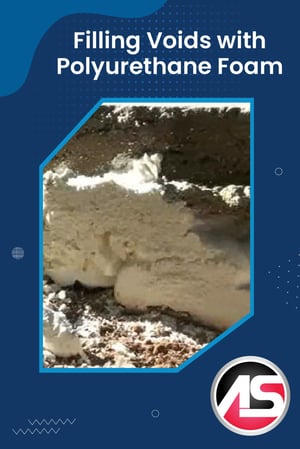
 Filling voids is one of the most common applications for polyurethane concrete repair foam. Geotech contractors use specialized foam to fill voids in the soil under slabs, behind retaining walls, and around municipal infrastructure. In this post, we'll review some of the most popular Alchemy-Spetec blog articles on the subject.
Filling voids is one of the most common applications for polyurethane concrete repair foam. Geotech contractors use specialized foam to fill voids in the soil under slabs, behind retaining walls, and around municipal infrastructure. In this post, we'll review some of the most popular Alchemy-Spetec blog articles on the subject.
Filling Voids Under Concrete Slabs
In his blog post Filling Dangerous Voids Under Slabs, Alchemy-Spetec's Geotech Division Manager Andy Powell covers the following key points:
- The dangers of soil voids under slabs.
- Signs of a possible void under a slab.
- How polyurethane is used to repair voids.
Filling Voids Surrounding a Structure
In his blog post Filling Voids with One-Component Polyurethane, Alchemy-Spetec's Geotech Director of Technical Services Colt Hullander discusses the materials used for this specific application...
Alchemy-Spetec's AP Fill 700 and AP Fill 720 are one-component polyurethanes used for filling voids in supporting soil surrounding a structure. Situations in which these materials might be used for void fill include soil adjacent to retaining walls, basement walls, seawalls, and infrastructure boxes.
Filling Voids in a Municipal Leak Seal Context
In his blog post, Sealing Leaks & Voids in Concrete Infrastructure, Alchemy-Spetec's Leak Seal Director of Technical Services Charlie Lerman outlines the causes of and remedies for leaks and voids in concrete infrastructure...
Causes of Leaks and Voids:
- Imperfect construction.
- Weather and wear.
- Unstable soil.
How Injection Grout Helps:
- Water activation.
- Pressure injection.
- Flexible, watertight seal.



